How eCommerce Merchandisers Can Leverage SEO Trends Data
Nowadays, SEO and PPC practitioners need to think outside the box, especially when it comes to eCommerce sites. In order to stay ahead of competitors, we need to invent creative ways to provide unique value through search engines. Ecommerce SEO isn’t just about rankings anymore. It includes ROI (revenue) from category pages, product pages, and beyond. At Greenlane, we like the idea of arming eCommerce teams with actionable data.
Who could benefit from actionable data more than merchandisers?
In retail, merchandisers decide what products a store should carry. They are often the trendsetters. But they often operate in a universe separate from the digital marketing teams. While I don’t pretend to know the intricacies of their profession, I do know that search marketers are phenomenal at mining searcher data, understanding intent, and developing campaigns based on needs. In my experience, site merchandisers didn’t know this data is freely available. We provide that extra layer of data for some of our clients’ merchandisers.
Imagine saying this in an online retail company meeting: “In 2016, during Q3, people started searching for ‘untucked shirts’ like never before. There is search demand, and competition is starting to build, so it may be time to throw our hat into the ring!”
Then flash this fancy chart as proof:
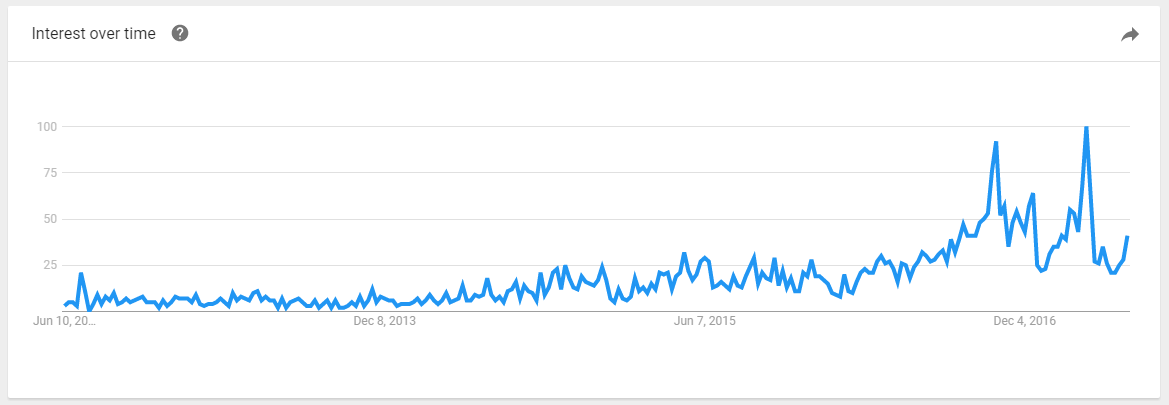
If you’re like most eCommerce sites I’ve seen, you live in a silo ripe for knocking down. This information can only help merchandisers, as well as trickle into an improvement in driving sales, conversion rates, customer experience, and digital marketing success. Wins for everyone!
How To Gather Trends Data En Masse
In this task, we’re going to look at quickly gathering two data points. Keywords (to serve as a proxy for products or product types) and Google Trends data.
Keyword Research
Like all eCommerce SEO campaigns, keyword research is at the heart of this task. Extending your keyword research will make it easier to optimize your product pages, landing pages, and content pieces with the most relevant search queries aligning with the intent of your audience. There are hundreds of great tutorials about the various keyword discovery techniques. To make it valuable to your merchandisers, you need to focus on terms that are relevant to the products the site already sells. But ask if merchandisers would like expanded keywords!
For example, if your website exclusively sells belts, would they find other product descriptions that hold up pants (like suspenders) of any value? It doesn’t make sense to grab “all the junk” only to purge it later. I recommend targeted keyword research, which can easily be done with just a few simple questions to your merchandisers.
If you’re a beginner to keyword research, here are a few resources to get you started:
- How To Do Keyword Research in 2017 – Ahrefs
- Keyword Research For SEO: The Definitive Guide – Backlinko
- Free Keyword Research Tools For Awesome Keyword Research In 2020 – Matthew Woodward
To identify categories of a website, I’ll often lean on a site crawl with a tool like Screaming Frog (with some well-crafted excludes) to start my spreadsheet.
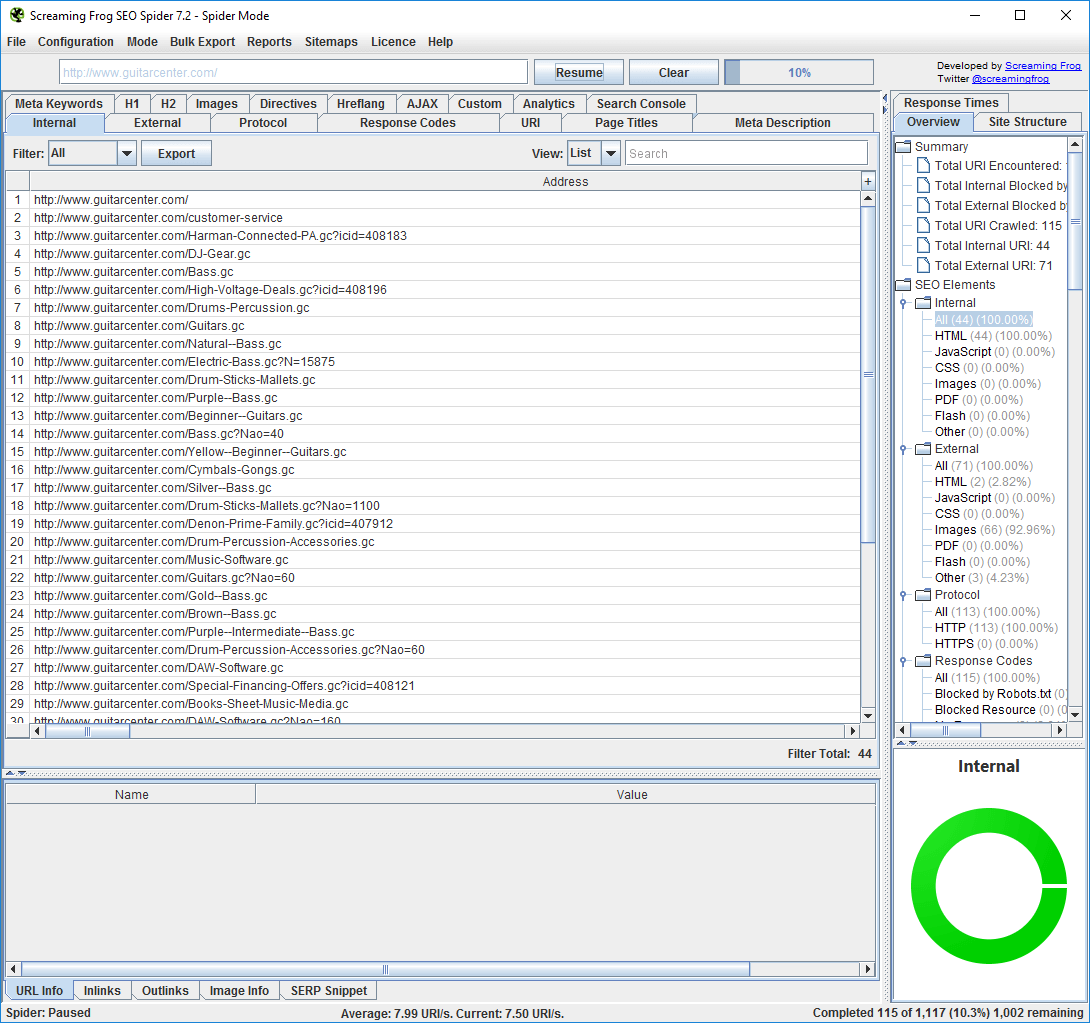
E-commerce Trends Data
Once you have a good list, it’s time to get the trends data. I immediately think of two sources – Google Trends (which I used in my graph screenshot example above), and SEMrush.
Both have pros and cons. Let’s use the keyword “open space office furniture”.
Google clearly has data on this word (you can get some from Keyword Planner). But, they elect not to show it in Google Trends:
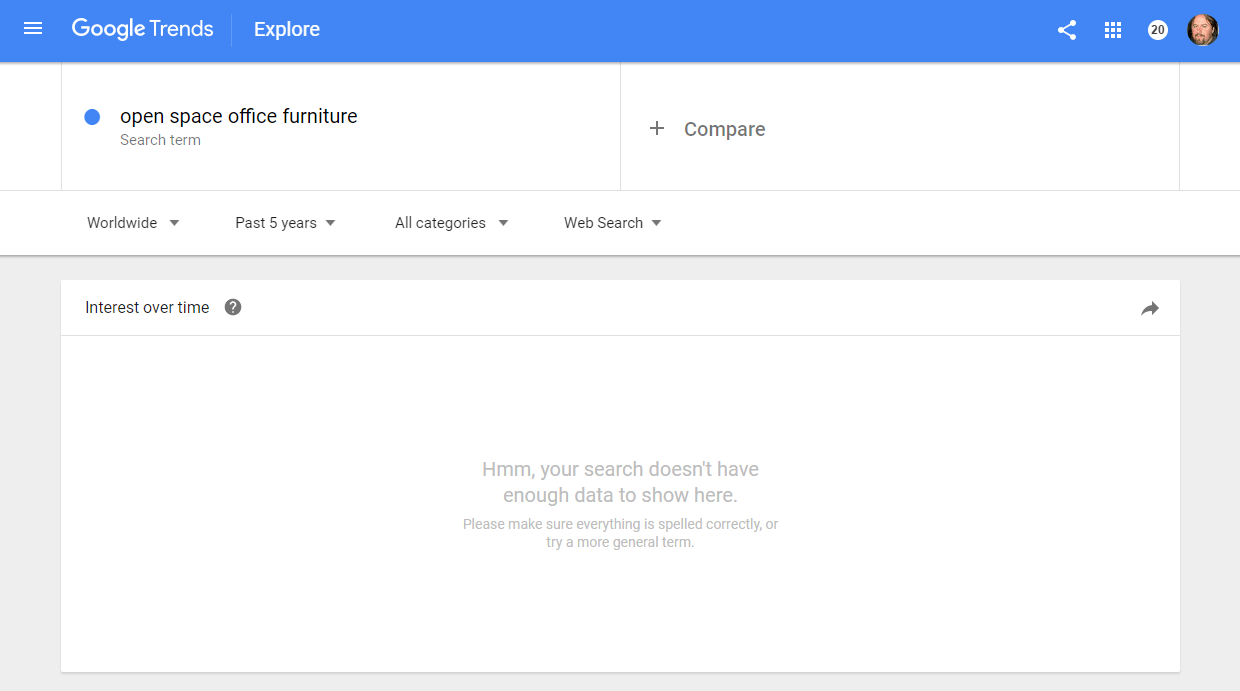
Yet in the case of this keyword, you’ll see a bit more from SEMrush. Not many searches represented, but still searches nonetheless:
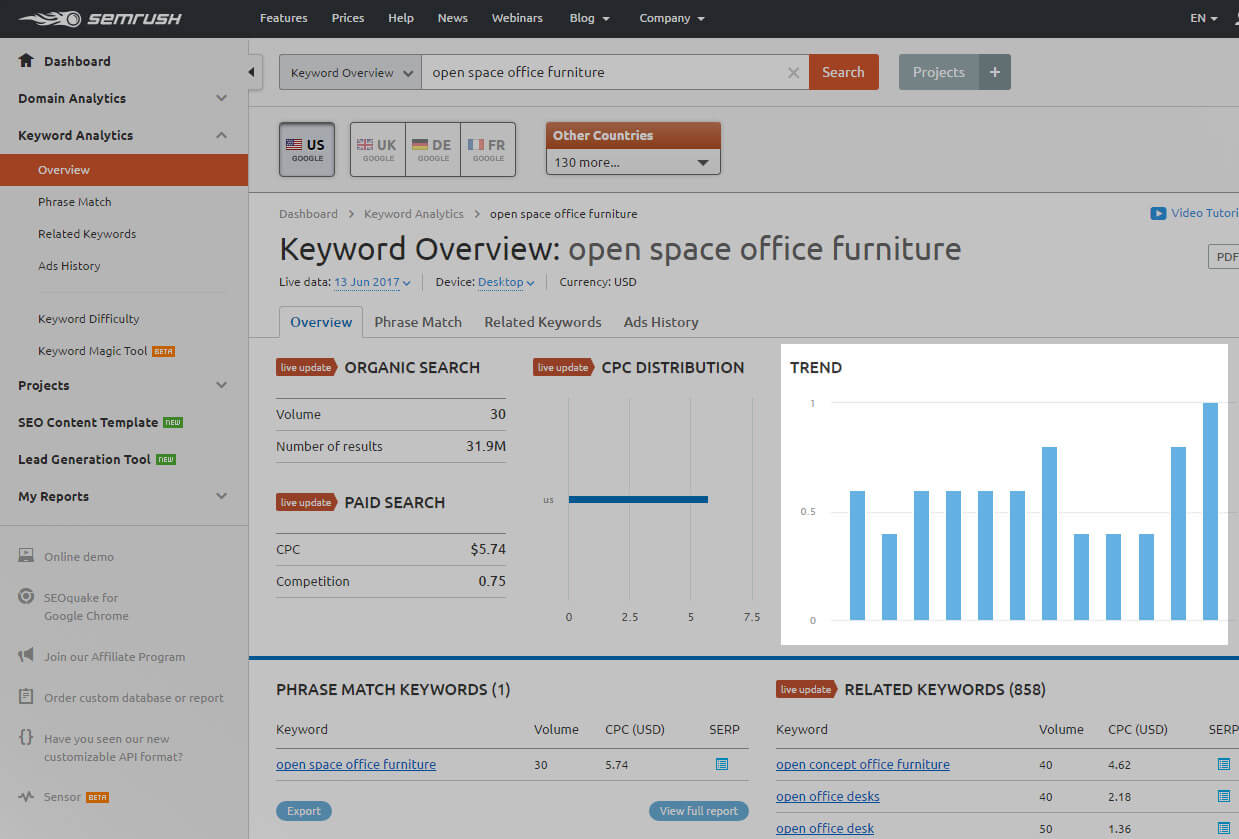
Another clear difference between Google Trends and SEMrush – it’s much, much easier to see longer periods of time with Google Trends. You can go back to as far as 2004. SEMrush doesn’t give you that kind of depth
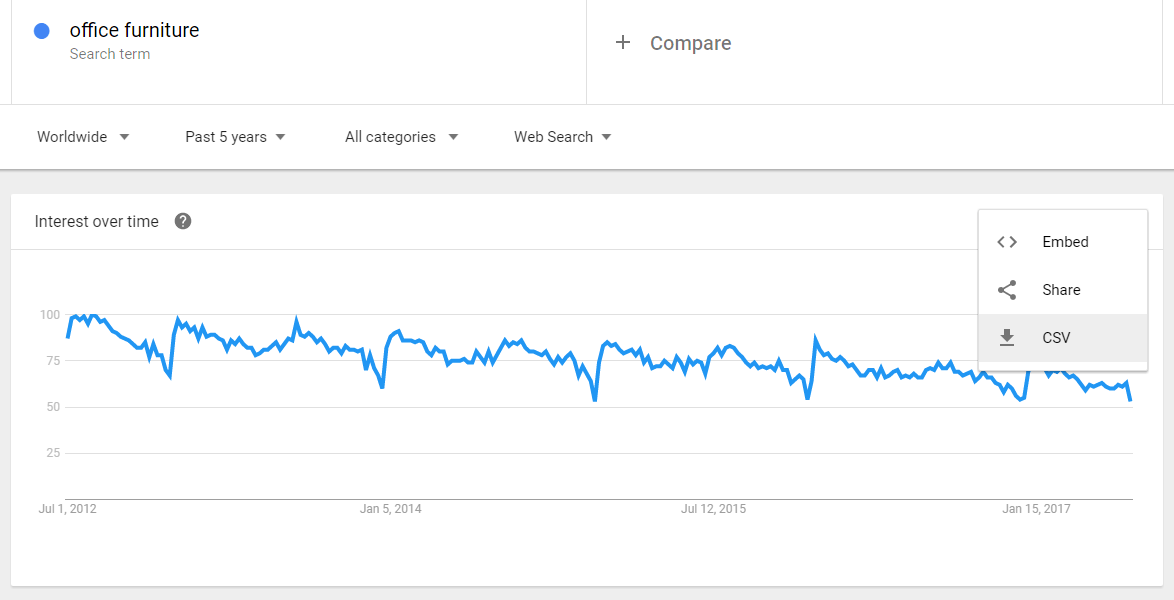
How Can We Get The Data?
Here’s where Google Trends has an edge. This data can be exported. Take a look:
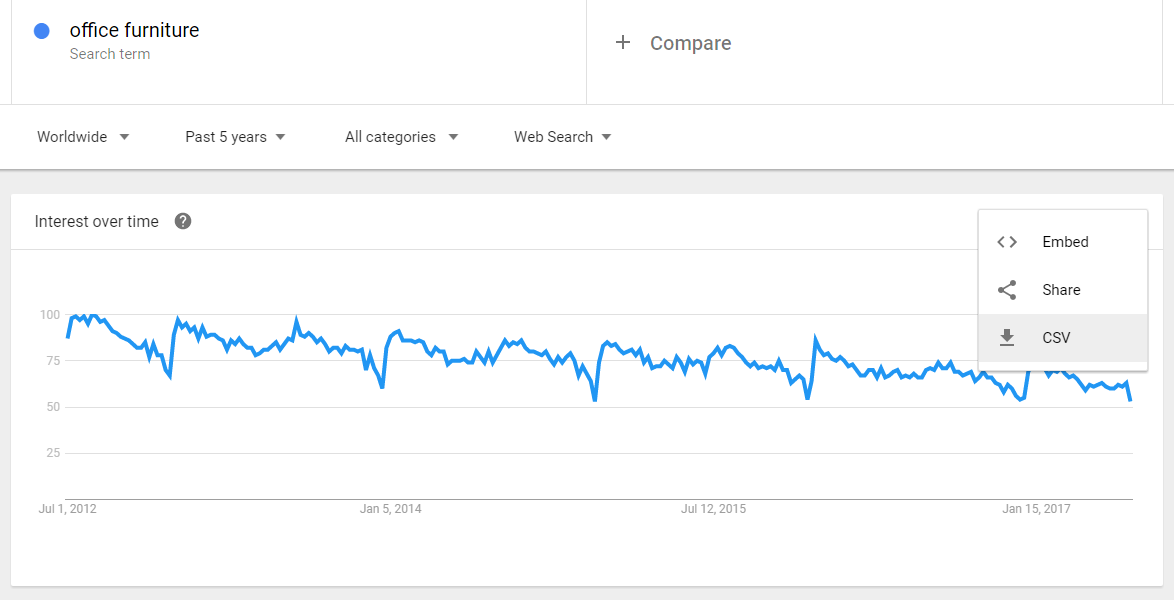
The monthly numbers are listed in a column:

With a bit of Excel work, you can chart the trend any way you’d prefer:

Exporting data from SEMrush gives you a trend column as well, with comma-separated values . Here’s what you’ll see in an SEMrush export:
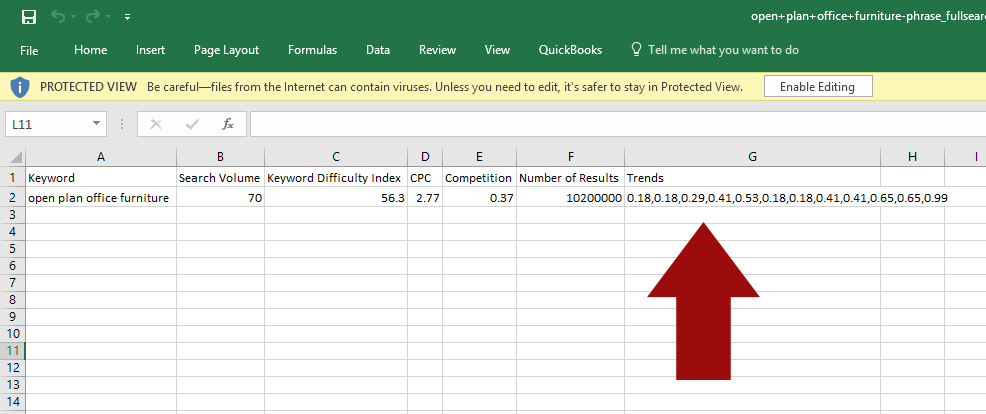
Just like above, you can format this into any snapshot view you’d prefer:
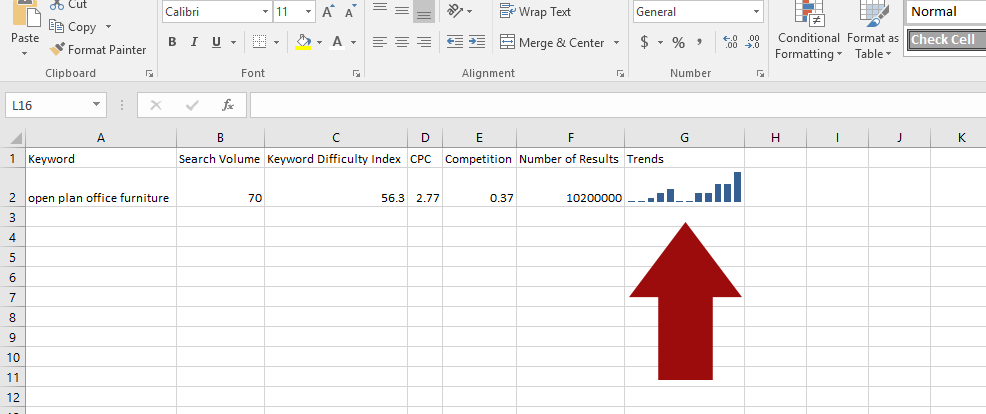
What Next?
With this data, your merchandisers can make improved purchasing decisions that consider timelines. As an SEO expert, you can sync with your merchandisers and decide the best time to begin pushing the products with better coordination. As a PPC’er, you can also sync with your merchandisers to start setting up paid search campaigns with better coordination. It’s a win-win-win and helpful for developing future strategies for a digital eCommerce website.
Follow the @greenlane_team on Twitter for more helpful articles and digital tips.







